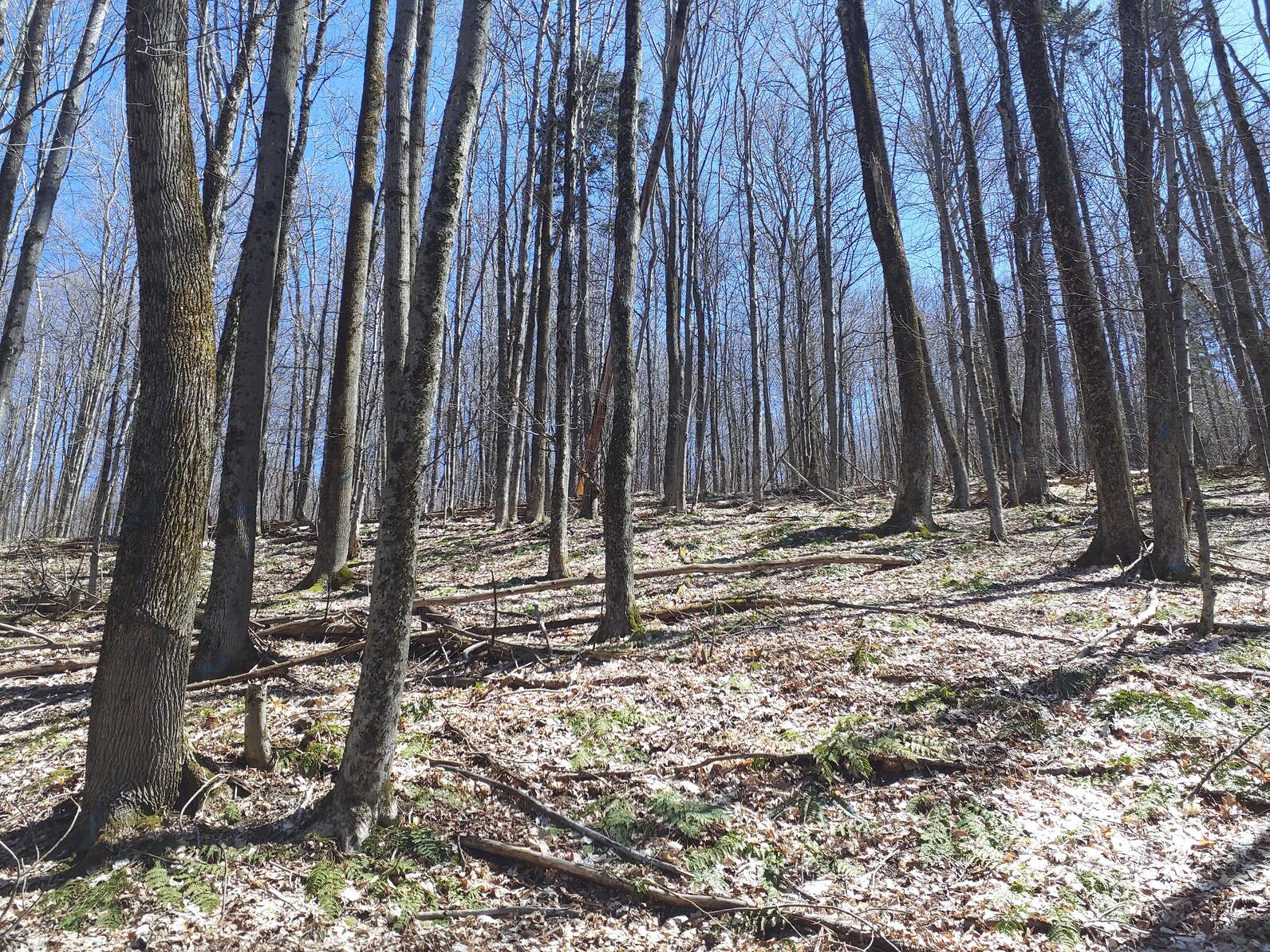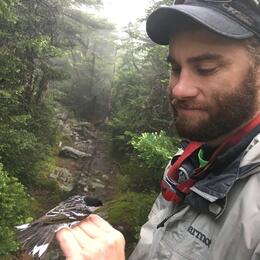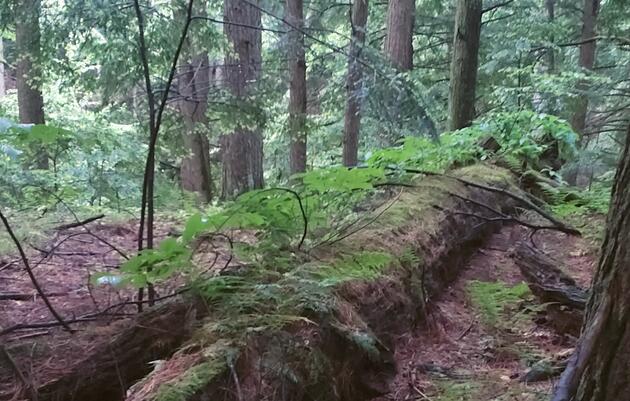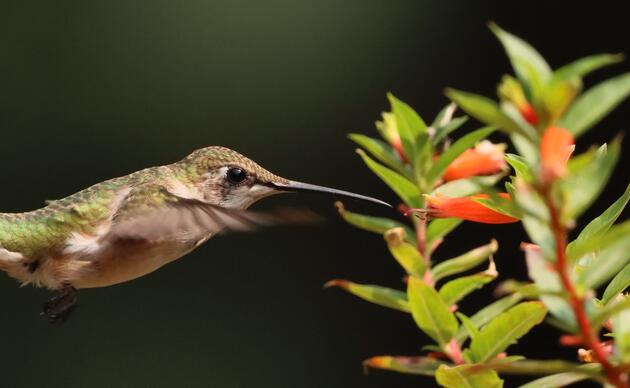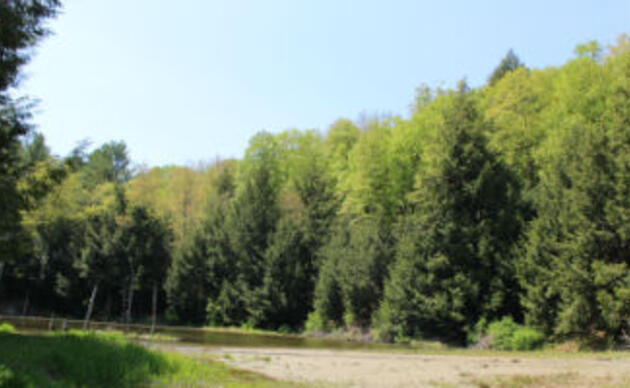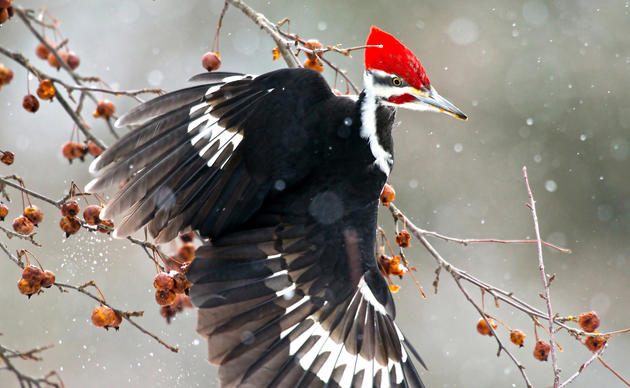Merck Forest and Farmland Center (MFFC), located in southwestern Vermont, has long been recognized for its stewardship and education efforts. With over 3,200 acres of forest and fields, MFFC offers educational programs and abundant opportunities to explore its lands, serving as a demonstration of forest management practices and natural resource stewardship. Audubon Vermont has been collaborating with MFFC to implement bird-friendly forestry practices, including a Bird-Friendly Maple sugarbush.
A recent forest restoration project along the McCormick Trail, southwest of the farm area, aims to enhance bird habitat, improve forest health, and boost carbon sequestration by accelerating the development of old-growth conditions in a forest that, like most of Vermont’s forests, was impacted by 19th-century deforestation. The project is guided by Audubon Vermont’s bird-friendly ecological forestry principles and focuses on increasing habitat complexity, biodiversity, and forest resilience.
Project planning began with an evaluation of the forest using Audubon Vermont’s Foresters for the Birds methods, assessing factors like forest health, species diversity, and habitat complexity. Management strategies were further refined using research from Drs. Anthony D’Amato and Paul Catanzaro’s publication Restoring Old-Growth Characteristics to New England’s and New York’s Forests. These strategies include:
- Retaining more large diameter ‘legacy’ trees to preserve habitat and carbon storage.
- Increasing the number of large snags (standing dead trees) to support cavity-nesting birds and wildlife.
- Adding more large-diameter downed logs and treetops to the forest floor to improve soil health, habitat, and retain carbon.
- Stimulating multi-age tree growth to create a layered forest structure that boosts habitat quality and carbon sequestration.
By selectively harvesting a portion of the mature trees, this approach promotes the growth of smaller trees in the midstory and seedlings in the understory, mimicking natural disturbances like windstorms. The restoration aims to create a forest with at least three distinct age classes of trees, speeding up a process that would normally take centuries.
Before the project, the forest was typical of second-growth forests that have grown back across Vermont since the 19th century, with a closed canopy, limited understory and midstory layers, and few snags or downed logs. The prevailing presence of ash, vulnerable to the invasive Emerald Ash Borer (EAB), made the forest susceptible to drastic future impacts. The restoration seeks to diversify tree species, mitigate EAB threats, and enhance forest complexity, all while preserving mature trees for long-term carbon storage and continuity in habitat structure.
This project also has economic value: timber harvested, destined for local use, helped fund the restoration, and provided income to MFFC, which can then be used to advance its mission. It demonstrates that forest management can balance conservation and economic return, benefiting the environment, landowners, and local economies. A portion of the wood is also being used on the property for various building projects.
MFFC’s forest restoration project shows how science-based forestry can be implemented to restore ecological integrity, strengthen climate resilience, and enhance biodiversity while supporting sustainable production of merchantable timber. To see the project, and others, firsthand, visit Merck Forest or join an upcoming guided walk hosted by Audubon Vermont and the Vermont Woodlands Association. Event details will be shared on the organizations’ calendars. If you’re a landowner interested in bird-friendly forestry on your own land, visit Audubon Vermont’s technical assistance (forests) webpage for resources and support.
